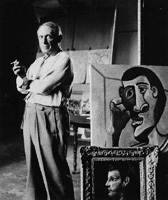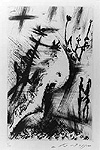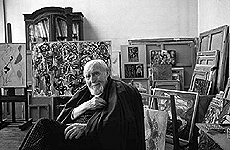|
Angel Art, the worlds greatest manifestantsAndré Masson
Most devoted producer of Angel ArtI consider Andre Masson Masson as one of the worlds greatest manifestants of Angel Art. Masson was the most devoted practitioner of automatic drawing techniques inside the surrealist movement. André-Aimé-René Masson (January 4, 1896 - October 28, 1987) was a French artist. Masson was born in Balagny-sur-Thérain in France but was brought up in Belgium. He studied art in Brussels and Paris. He fought for France in World War I and was seriously injured. Most enthusiastic employer of Angel Drawing


Masson's early works display an interest in cubism. He later became associated with surrealism. He was one of the most enthusiastic employers of automatic drawing, making a number of angel drawings in pen and ink. From around 1926 he experimented by throwing sand and glue onto canvas and making oil paintings based around the shapes so-formed. By the end of the 1920s, however, he was finding automatism rather restricting - he left the surrealist movement and turned instead to a more structured style, often producing works with a violent or erotic theme, and making a number of paintings in reaction to the Spanish Civil War (he associated once more with the surrealists at the end of the 1930s). No more Angel Art ? Interested in mythical imagery.From "Masson", by Dawn Ades: Andre Masson (1896-1987) was one of the major early French Surrealist painters. A close friend of Andre Breton, Joan Miro and Max Ernst, he joined the Surrealist movement in the early 20s, then disassociated with it in the early 30s, focusing instead on the human condition - the fundamental impulses of love and hatred - and reacting to the Spanish Civil War. In the early 40s, Masson moved to America and became interested in mythical imagery. Many of his paintings from this period show a focus on African American and Native American myths, and the style of his expression and brushwork influenced many young American painters. André Masson: "Painful contradictions are sometimes the source of the greatest riches."Although Masson is most often associated with Surrealism, his work evades definition through any one twentieth-century movement. In some ways, the identification with Surrealism has been confusing. Not only has it focussed attention on a partial aspect of his career, but has obscured profound differences between them. If it is true that some of his finest paintings were produced when he was closest to Surrealism, it is also the case that they were generated by deep tensions: as he wrote himself, "Painful contradictions are sometimes the source of the greatest riches". Challenging Surrealism on its own grounds!Masson had especially close relations throughout his life with poets and writers, and they in turn responded to the qualities in his work that spoke to their shared concerns. But that is not to say that he was a literary painter. Andre Breton, for instance, celebrated the chemistry of the intellect" that marked for him Masson as the painter who understood the full implications of the surrealist project. But before his encounter with Surrealism in 1924, others had made him their elective artist: Michael Leiris, Georges Limbour, Antonin Artaud, and a little later Georges Bataille. For them, who were to be the "dissident" surrealists, or, in the case of Bataille, "Surrealism's old enemy from within", Masson's work possessed another, Dionysian, character, as Leiris called it, that was to challenge Surrealism on its own grounds. Erotic Angel Art
What's wrong with erotism in Angel Art ?Under the German occupation of France during World War II, his work was condemed by the Nazis as immoral. With the assistance of Varian Fry in Marseille, Masson escaped the Nazi regime on a ship to the French island of Martinique from where he went on to the United States. Upon arrival in New York City, U.S. customs officials inspecting Masson's luggage found a cache of his erotic angel drawings. Denouncing them as pornographic, they ripped them up before the artist's eyes. Settling in Aix-en-Provence
Living in New Preston, Connecticut his work became an important influence on American abstract expressionists. Following the war, he returned to France and settled in Aix-en-Provence, painting a number of landscapes there.
|